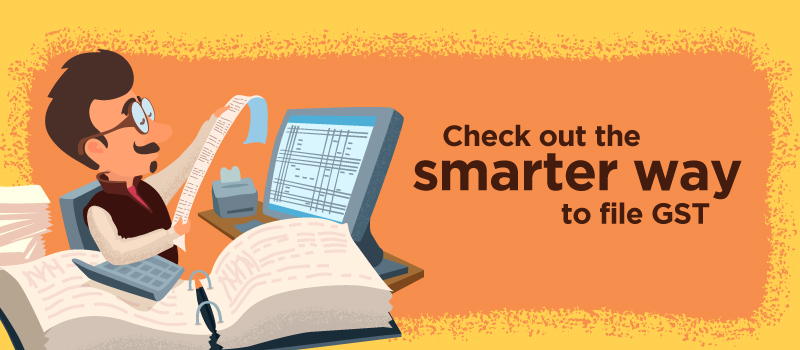
Do entities need to file GST?
Any business – irrespective of whether one is a trader, manufacturer, reseller or service provider – having a turnover that exceeds Rs. 20,00,000 p.a. is required to file GST returns in the prescribed formats. However, in the case of north-eastern states, this limit stands at Rs. 10,00,000 p.a. Once a business has exceeded the turnover limit, GST registration is required to be done within 30 days. Moreover, GST requires a Nil return to be filed for a specific period irrespective of whether there’s been any purchase/sales activity or not during that period.
Filing Process
All GST-registered businesses have to e-file their returns while making payments electronically before the due date. It is also a mandatory requirement that businesses e-file GST returns through the GSTN Portal. Additionally, the GST Identification Number obtained upon registration is required for filing all returns. The filing process has witnessed massive changes since the introduction of GST.
Earlier, the process mandated three forms to be filed every month, besides an additional annual return. This meant that an entity had to file a total of 37 returns in a year. However, currently, the GST Council has revamped the process to make it easier for businesses. That being said, it might take over six months to a year for the final system of return filing to be implemented and the transition will be done in a phased manner.
Under the new model that’s approved by the GST Council, the return filing process would be as listed below:
- The existing model of GSTR-1 and GSTR-3B forms will continue for a period of six months with the timeline for GSTR-1 shortened.
- Once this period has passed, a single-monthly system of filing returns will be introduced, wherein all taxpayers will be required to file one monthly return (except for small taxpayers). Moreover, dealers with Nil tax return along with composition dealers will be required to file only quarterly returns.
- Based on the ‘Upload – Lock – Pay' system, the GST return system would be simple comprising of two principal tables. Table one would be for the purpose of reporting outward supplies while table two will be for availing Input Tax Credit (ITC) as per the invoices that’re uploaded by the supplier. Moreover, these invoices can be uploaded simultaneously by the seller and can also be viewed and locked by the buyer on a continuous basis for availing ITC. This, in turn, will ensure that a substantial part of the return process is automatically filled based on the invoices that’re uploaded by the buyer and the seller. However, once the buyer has accepted the invoice, the seller will not be able to edit or delete the invoices.
- In case of default or non-payment of tax by the seller, the government has the right to recover dues from both the buyer and the seller. However, in case of exceptional situations such as a missing dealer, closure of business by the seller or if the seller has inadequate assets – reversal of credit from the buyer can also be initiated by the revenue authorities.
Small taxpayers having a turnover below Rs. 5 crores will be allowed to file quarterly returns. This process would be similar to the monthly payment process, but will be applicable only for two types of registered persons – small traders making only business-to-business (B2B) and business-to-consumer enterprises (B2C) supply.
Two simplified returns, namely Sahaj and Sugam have been created for this purpose and the information required to be filled is considerably lower compared to a regular return.




